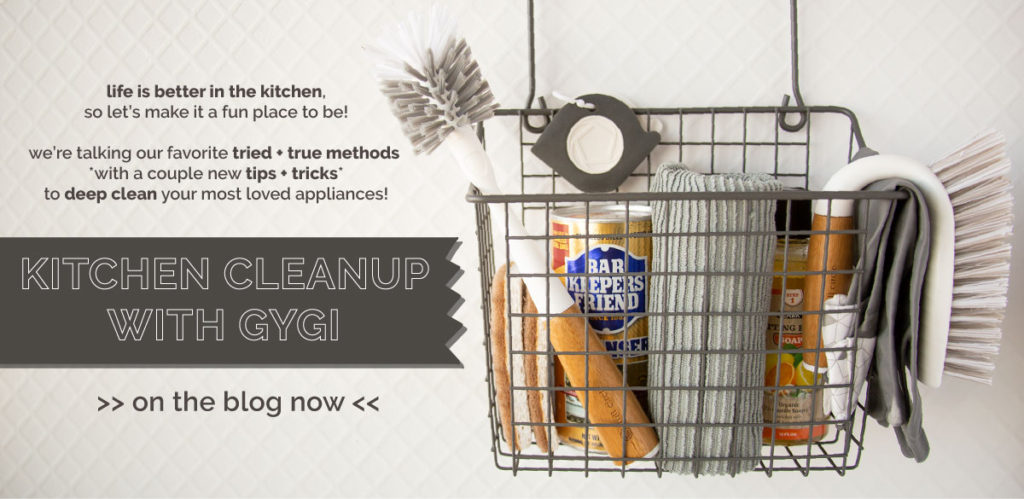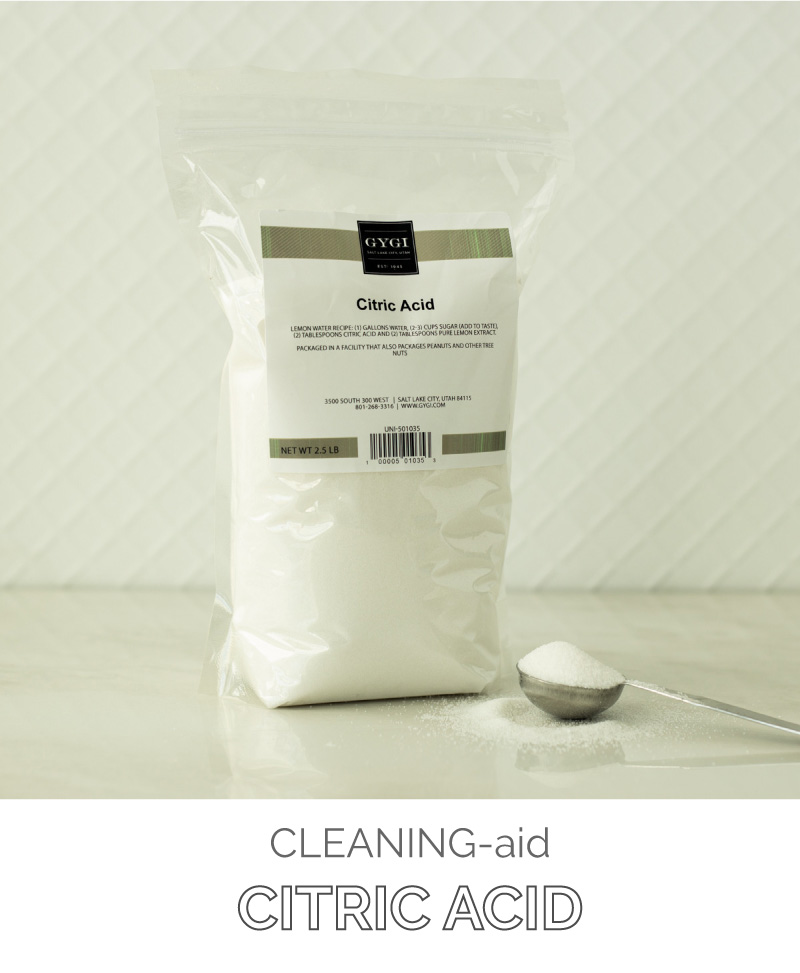If you’ve ever lived without a dishwasher, you know that life is just not quite right without this powerful machine scrubbing, sanitizing and drying your hard-used dishes. We rely on this appliance and would cry without it. But it needs a little bit of care from time to time to stay in its best condition.
But don’t feel overwhelmed, we have broken down your dishwasher maintenance into some small, 5-minute tasks, that you can accomplish after the kids are off to school, or right before bed. Read more to find out our simple dishwasher tasks….
HOW TO CARE FOR YOUR DISHWASHER
1. Wipe down the seals and rubber gaskets around the door.
Dishwashers have seals around the door rim to prevent the machine from leaking while running. Wipe down the rubber seals and the door with a damp cloth with a little dish soap or vinegar to prevent soil and grime from building up.
2. Inspect and Clean the Spray Arm

Wipe down the spray arm with a dish cloth. You can actually remove the spray arm to remove any build up from the holes. Use a pipe cleaner or sewing needle to remove food particles, bits of paper or other debris from the spray arms’ small holes.
3. Clean out the Filter

If your dishwasher has a filter, remove it and clean off any food, grime or garbage. Food can become trapped in the filter and impair cleaning. Refer to your owner’s manual for detailed instructions on how to remove your Filter. (Most dishwasher’s user manuals can be found online. Helpful ol’ Google and YouTube can direct you to the right one.)
Once the pieces are removed you can wash them with a little dish soap and wipe out the dishwasher with a dish cloth.
Cleaning out around the dishwasher drain can help to ensure that dirty water is exiting the appliance adequately so that your dishes are cleaned well.
4. Clean with a Citric Acid or Vinegar Rinse
You dishwasher can start to collect a lot of grit and grime over time. Help to clear it all out by rinsing your dishwasher (without any dishes) with an Acid rinse.
Choose one of the following acids and run them through a short cycle to get rid of excess scale:
- Citric Acid
- White Vinegar
- Tang
- Lemon juice
- Lemonade mix
- Lemon-flavored Kool-Aid
Any powdered substances should be placed in the detergent dispenser and liquids can be left in a bowl on the top rack.
5. You can leave a little food on your dishes
What?!? You may have had it engrained to always rinse your dishes clean when putting them in the dishwasher. And certainly with older model dishwashers, they may not be equipped with powerful water streams to clean your dishes. But newer models actually work better when there’s just a little bit of food for the soap to adhere to when washing. The best plan is to scrape all the chunks of food (those just clog the filter) and leave the sauce and small debris behind for the dishwasher to take care of. We dare you to leave your dishes a little bit dirty on your next load.
6. Load your Dishwasher correctly
Take care to not cover the spray arm, or inhibit its ability to rotate fully.
Don’t overcrowd the dishes. They can rub together, cause chipping, cracking, and just don’t clean as well. I know it’s tempting to just stuff them all in there, but in the end it’s better to run two loads that won’t need a second cycle in the long run.
Keep out KNIVES and PANS. I know that is not the easiest thing to hear, but they really don’t belong in the dishwasher. Hand washing will leave more room for small items, and will keep your expensive tools lasting much longer.
TROUBLESHOOTING
If your dishwasher ever acts finicky, or causes problems it can feel like a best friend has betrayed you! We rely on the strength of our appliance! But most dishwasher problems can be solved with some easy solutions.
1. My dishes are coming out spotty or cloudy:
For spotting only, try using the heated drying cycle. If that doesn’t help, try using a rinse-aid product.
For cloudiness or filminess, there are several possible causes:
- Excessive detergent usage: Etching, or cloudiness, is glass corrosion. It is often caused by using too much detergent. A rainbow hue is the first sign of etching. Cut in half the amount of detergent used. Make sure you are always using Dishwasher detergent. Regular dish soap will cause an overflowing, bubbly mess!
- You may have hard water. You can purchase water hardness testing kits at home improvement stores to determine if a water softener is needed for your water supply. You can use a product like LemiShine with each load. Or use a Citric Acid or Vinegar rinse every so often to help break down the hard water.
2. My dishes are always soaking wet after a cycle
It can be so frustrating to run your dishes through the dishwasher and then be forced to hand dry half of them. And chances are the dishes that come out wet are the plastic plates, cups and Tupperware.
Unfortunately the drying cycle in the dishwasher relies on the water to evaporate from the dishes, which occurs easily on metal and ceramic dishes as they conduct heat much better than plastic. The plastic just doesn’t get quite hot enough to evaporate all the water, so you are left with beads of water on those dishes.
Solutions:
- Dry them by hand
- Crack the door of the dishwasher and let the dishes sit for a while (overnight is easiest!) so the water can evaporate from the plastic.
Now, if all your dishes come out wet, you may need to check your user’s manual to adjust the temperature of the drying cycle.
3. My dishes come out with Rust Spots
It’s likely the plastic coating on your dishwasher has worn off in a few places. There are a couple options when this happens:
- Replace the Rack all together
- Buy plastic caps engineered to fit your dishwasher’s racks
- Buy a plastic paint that you can use to recoat the rack
4. My dishwasher is always stinky
Check your drain and make sure there’s nothing nasty trapped in there.

We know you love your dishwasher. Now, go show it some love…
SHOP THE DISHWASHER CLEANING ESSENTIALS
So, you tackled the dishwasher and now you’re ready to clean the whole kitchen? We’ve broken it down into a few, straight-forward tasks. Click here to find the whole list, and make that kitchen a happier place to be.








